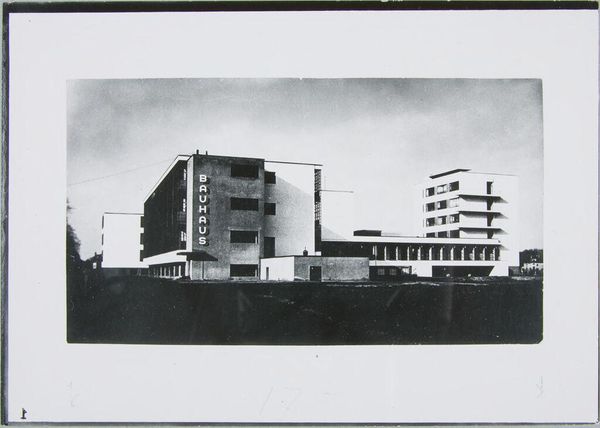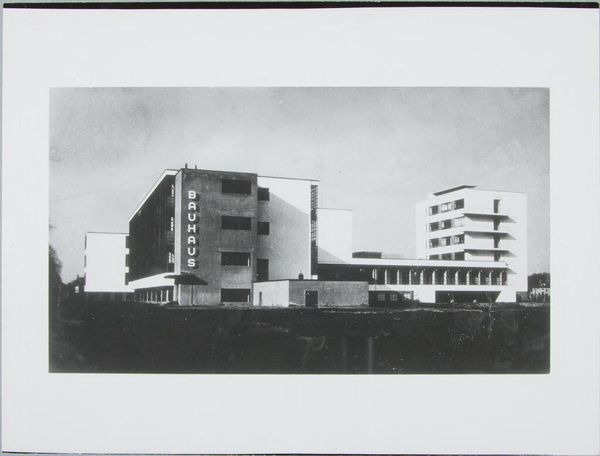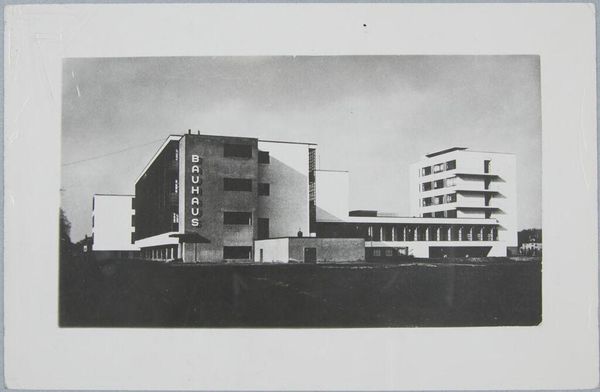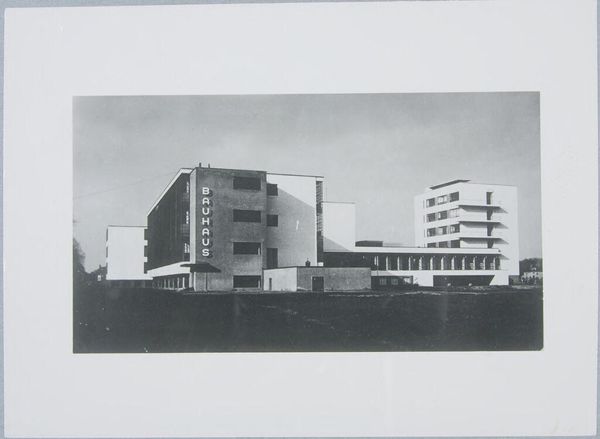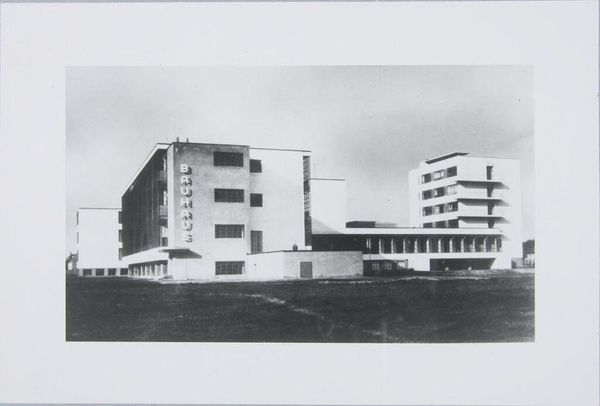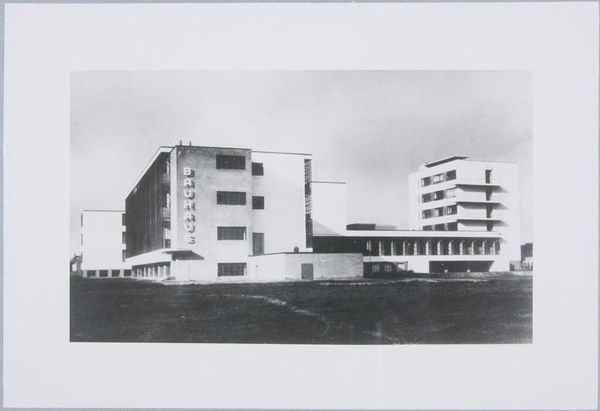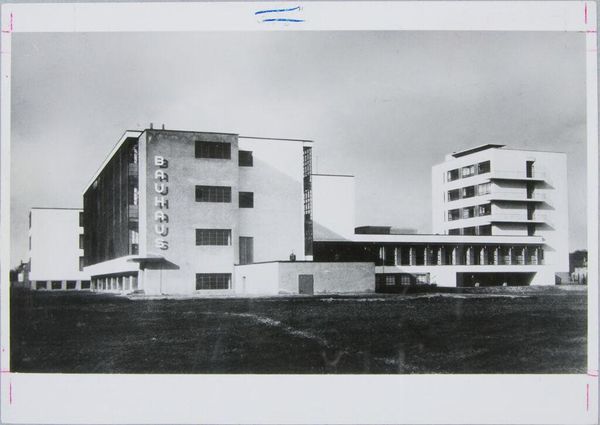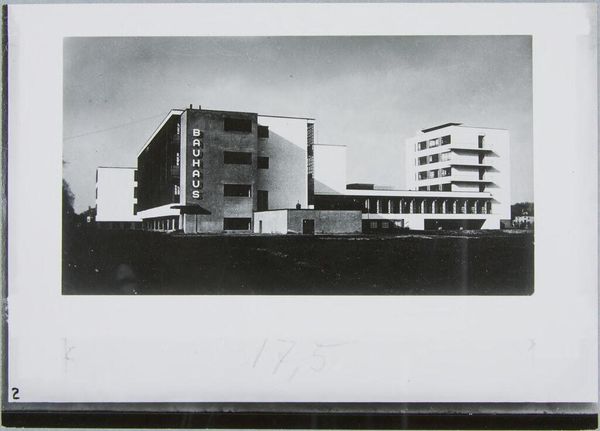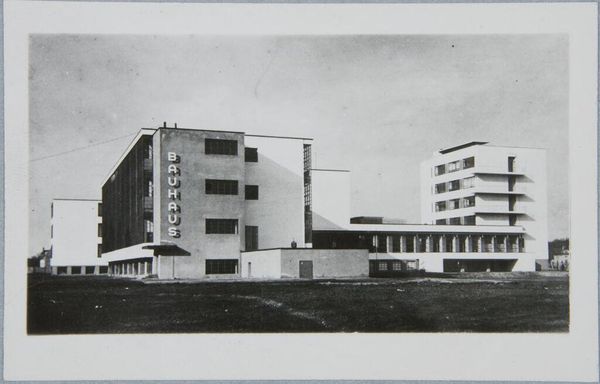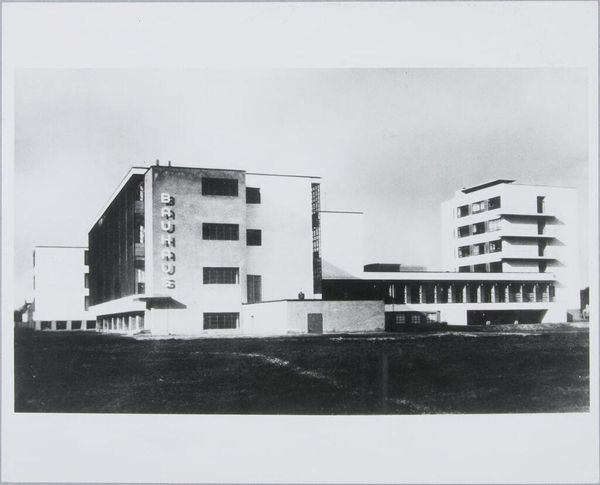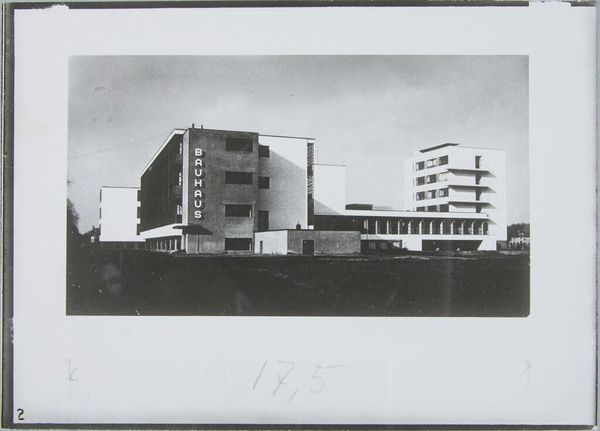
Bauhaus Building, Dessau, 1925-1926: View from southwest after 1926
0:00
0:00
Copyright: CC0 1.0
Editor: This photograph, taken by Klaus Hertig, captures the Bauhaus Building in Dessau, sometime between 1925 and 1926. I am struck by its stark geometry and the bold vertical lettering. What can you tell me about the history and impact of this architectural style? Curator: The Bauhaus, as a school and a movement, aimed to unify art, craft, and technology. This building, a physical manifestation of those ideals, became a potent symbol. Consider the socio-political context: post-WWI Germany sought a new identity, and the Bauhaus offered a radical vision. How do you think this building challenged conventional ideas of architecture? Editor: It definitely rejects ornamentation in favor of functionality. It feels almost utopian in its simplicity. Curator: Precisely. And that very utopianism made it a target. The Bauhaus was eventually shut down by the Nazi regime, who saw its internationalist style as a threat to national identity. The building’s image, therefore, is not just about aesthetics; it's about the complex relationship between art, politics, and power. Editor: That's a powerful perspective. I hadn't considered the political implications so directly. Thanks! Curator: My pleasure. Understanding art means understanding its place in history.
Comments
No comments
Be the first to comment and join the conversation on the ultimate creative platform.
